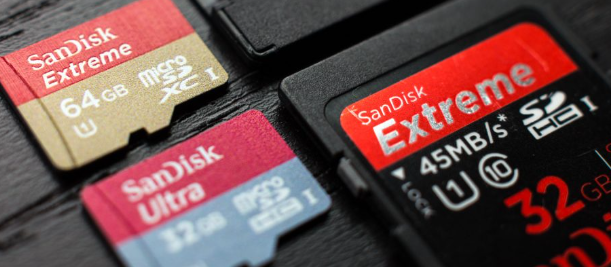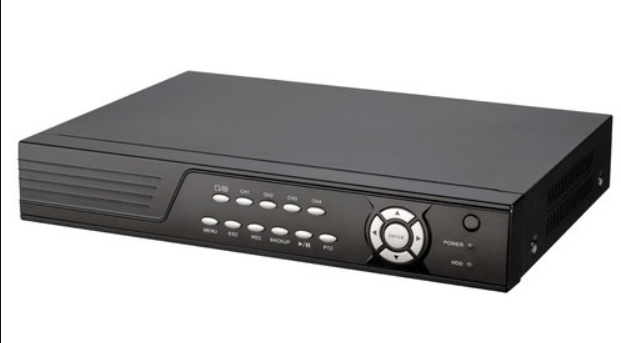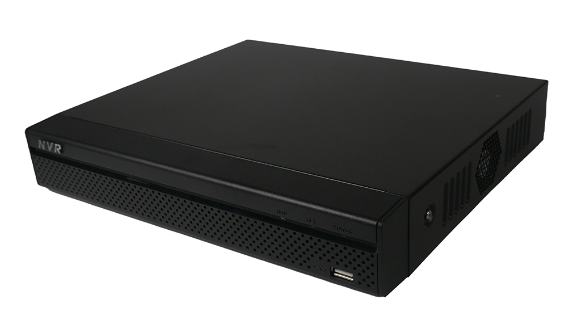How CCTV Works?
Closed-circuit television (CCTV) systems consist of several key components working together to capture and record security video footage.
Camera: The camera is the obvious and primary component responsible for capturing video.
Lens: The lens finds the field of view and focal length of the camera. You can use different lenses that suit your requirements.
Sensor: The sensor captures the light from the lens and converts light into electronic signals.
Processor: The processor does image processing, encoding, and transmission and It compresses video data to reduce storage requirements and facilitates remote viewing over networks.
The above section explains how CCTV cameras capture the video and process it in general.
But as you know technology in these areas has been evolving exponentially to offer you the best surveillance there is. Continue reading the next section on how footage is captured and saved in Security cameras.
Working Principle Behind Security Cameras
Different modes in CCTV cameras cater to different needs understanding these can help you when out there to choose one for your home or workspace.
1. Capture Modes on Security Cameras:
Continuous Capture: In continuous mode, the camera records video continuously, regardless of activity levels. This mode provides 24/7 coverage but consumes more storage space.
Motion-Triggered Capture: Motion-triggered mode activates the camera to record only when motion is detected within its field of view.
The motion sensor will be able to detect infrared radiation in the form of body heat which triggers video recording.
This helps conserve storage space and makes it easier to review relevant footage. Motion detection algorithms vary in sensitivity and accuracy, affecting the camera's responsiveness to movement.
The capturing part is done, now let's move to how the CCTV videos are processed and transmitted to the storage devices.
2. Analog and Digital Surveillance
Analog security systems: Analog surveillance cameras transmit video signals in analog format and are later converted to digital for storage and viewing.
They are Inexpensive and offer lower resolution and limited features compared to digital cameras.
The surveillance footage will be saved on a DVR( Digital video recorder). This system will work only if the DVR is synchronized with the camera.
Digital Cameras or IP security systems: Unlike analog CCTV cameras digital surveillance cameras capture and process video in digital format directly, offering higher resolution, better image quality, and advanced features such as remote access and intelligent video analytics.
They are more versatile and suitable for modern surveillance needs but are usually more expensive and offer advanced features like night vision.
CCTV Footage Video File Formats and Codecs
When it comes to CCTV footage, the choice of video file format and codec is crucial for efficient storage, transmission, and playback. Here are some of the formats in which your CCTV security footage is saved:
1. CCTV Footage Format
AVI (Audio Video Interleave):
AVI is a common format for CCTV footage, known for its compatibility and relatively simple structure.
| PROS | CONS |
| Compatibility with various media players | Tends to produce larger file sizes |
| Suitable for editing software |
MP4 (MPEG-4 Part 14):
MP4 is a highly popular format for CCTV footage due to its good balance between quality and file size.
| PROS | CONS |
| Good balance between quality and size | Compression may result in slight quality loss |
| Suitable for online sharing/playback |
MOV:
MOV is commonly used in CCTV systems, especially in environments where high-quality video and audio are crucial.
| PROS | CONS |
| High-quality video and audio | Limited compatibility with some platforms |
| Versatile for different surveillance needs |
MXF:
MXF is favored in professional CCTV setups, particularly in the broadcast and film industries.
| PROS | CONS |
| Designed for high-quality video/audio | Limited compatibility with consumer software |
| Suitable for broadcast and film industries |
2. Codecs for CCTV Footage
Codecs in video files help you compress and decompress digital video to make the file size smaller helping in storage and distribution.
Typically these are pre-defined by the manufacturers to provide efficient compression and compatibility.
H.264 (AVC):
Widely used codec for CCTV footage due to its efficient compression and good quality.
Pros: Provides significant compression while maintaining reasonable image quality, making it suitable for storage and transmission.
Cons: May require more processing power for encoding and decoding, and compression changes are noticeable at lower bitrates.
H.265 (HEVC):
It offers even higher compression efficiency than H.264, potentially reducing file sizes further.
Pros: Ideal for scenarios where storage space is a concern, as it can maintain good quality at lower bitrates.
Cons: Requires more computational resources for encoding and decoding, and compatibility may be limited with older hardware and software.
MJPEG (Motion JPEG):
Each frame is compressed individually, making it suitable for applications where frame-by-frame analysis is necessary.
Pros: Simple encoding and decoding process, making it suitable for real-time monitoring and analysis.
Cons: Produces larger file sizes compared to modern codecs like H.264 and H.265, and may not offer as much compression efficiency.
Data Storage for Surveillance Cameras
As you read above surveillance cameras are always at work capturing footage, they require effective data storage solutions to store captured video footage for later retrieval and analysis
Surveillance Camera systems require effective data storage solutions to store captured video footage for later retrieval and analysis.
There are several options available for both local and cloud storage, each with its advantages and considerations.
1. Local Storage Options:
SD Cards: SD cards are commonly used for local storage in smaller surveillance Cameras as they are simple and affordable and compatible with almost all other devices too.

However, SD cards have limited storage capacity, which may restrict the amount of footage that can be stored, and they can be vulnerable to physical damage or tampering.
DVRs (Digital Video Recorders): DVRs are dedicated devices designed to record and store video footage from multiple CCTV cameras. They offer higher storage capacities compared to SD cards and provide features such as scheduled recording, motion detection, and remote access.

DVRs typically use hard disk drives (HDDs) for storage, allowing for larger amounts of footage to be stored over longer periods.
However, DVRs are typically bulkier and may require more setup and maintenance compared to other options.
NVRs (Network Video Recorders): NVRs are similar to DVRs but are designed to work with IP (Internet Protocol) cameras, recording and storing video data transmitted over a network. NVRs offer scalability and flexibility, allowing for easy integration with existing network infrastructure and remote access via the Internet.

They often support higher-resolution cameras and advanced features such as video analytics. However, NVRs may require higher initial investment and dependence on network reliability for continuous recording.
Cloud Storage Options:
Cloud storage involves storing video footage on remote servers managed by third-party providers. This option offers several benefits, including.
- Scalability: Cloud storage can easily accommodate large amounts of data without the need for physical hardware upgrades.
- Remote Access: Users can access stored footage from anywhere with an internet connection, making it convenient for remote monitoring and management.
- Redundancy: Cloud storage providers often implement redundant storage and backup mechanisms, enhancing data reliability and durability.
However, there are also security and access considerations when footage is stored off-site, potentially leading to increased subscription prices over time.
Hybrid Systems: Hybrid Surveillance systems combine both local and cloud storage capabilities, offering the benefits of both approaches.
For example, footage may be initially recorded and stored locally for immediate access and then backed up to the cloud for redundancy and remote access.
This setup provides a balance between data security, accessibility, and cost-effectiveness, allowing users to leverage the strengths of both local and cloud storage solutions.
However, hybrid systems may require additional configuration and management complexity compared to single-storage solutions.
Just like any other cameras out there, data loss can happen on CCTV cameras as well and there are recovery options too, Make sure you choose the right one to recover the security footage.
Data Recovery for Security Footage:
Despite the surveillance system's primary purpose being to capture and preserve footage, various factors like accidental deletion, hardware failure, physical damage, and corruption can lead to the loss of critical video data.
All you need to do is disconnect the storage device and choose a professional recovery solution to retrieve your security footage back.
Choose a reliable data recovery software like Remo Recover to retrieve security footage from all kinds of storage devices.
Dealing with Corrupt Security Footage
Other than losing the footage corruption also corruption of CCTV Security footage compromises the integrity and usability of the video data. Factors like file system errors, Software Errors, and storage media failure can corrupt your CCTV Video files.
You can opt for a video repair software designed for repairing corrupt video files that may be effective in repairing CCTV footage or Professional data recovery services with expertise in CCTV systems can assess the extent of corruption and apply advanced techniques to recover and repair the footage.
To prevent data loss and corruption in your security footage practice regular maintenance, and data backups, and have a power backup to reduce the risk of losing your security footage
Conclusion
We trust that this article has provided you with comprehensive insights into the workings of CCTV systems. To summarize, ensuring the security of CCTV footage is paramount. Despite preventive measures, data loss can occur for numerous reasons.
We hope this article has clarified how CCTV works and protects CCTV footage Even with precautions, data loss can occur. If you are facing CCTV issues, seeking help from data recovery experts is vital.